Isle of Wight gritting routes are defined roads that should be gritted / cleared by Island Roads as part of their contract to provide services to the Isle of Wight council under the 2013 Highways PFI deal.
The wording the council uses is:
Island Roads manages and maintains the Isle of Wight’s roads and footways to ensure that everyone is able to move around the highways as safely as possible. This includes keeping the roads and footways clear of obstructions, snow and ice wherever possible.
Isle of Wight Gritting Routes: Isle of Wight
Below are each of the six routes that cover the main roads on the Isle of Wight. If you want to see the full-sized map of any of them, just click on the graphic.
Isle of Wight Gritting Route 1
Areas covered: Newport, East Cowes, Whippingham, Wootton, Havenstreet, Binstead, Ryde
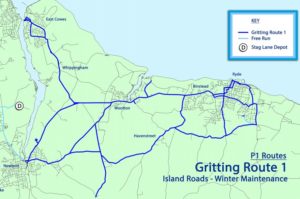
Isle of Wight Gritting Route 2
Areas covered: Newport, Arreton, Ashey, Brading, Seaview, St Helens, Bembridge
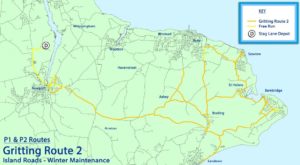
Isle of Wight Gritting Route 3
Areas covered: Newport, Blackwater, Rookley, Godshill, Shanklin, Lake, Sandown, Newchurch, Arreton
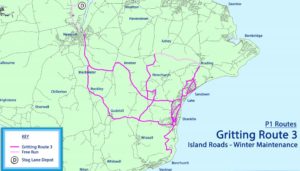
Isle of Wight Gritting Route 4
Areas covered: Newport, Carisbrooke, Chillerton, Chale, Niton, Whitwell, St Lawrence, Ventnor, Wroxall, Godshill, Rookley
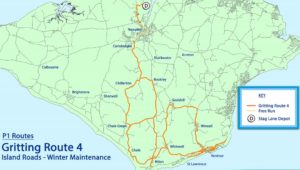
Isle of Wight Gritting Route 5
Areas covered: Newport, Carisbrooke, Calbourne, Freshwater Bay, Brook, Brighstone, Shorwell
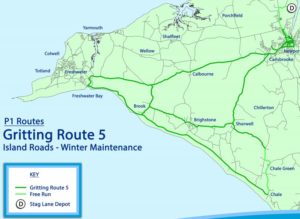
Isle of Wight Gritting Route 6
Areas covered: Newport, Gunville, Cowes, Gurnard, Northwood, Porchfield, Shalfleet, Yarmouth, Freshwater, Totland, Calbourne
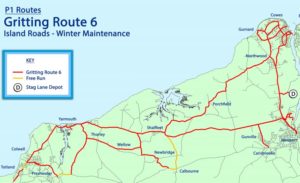
The council also say:
Island Roads is using a ‘pre-wet’ type of salt solution which has had a brine mixture added to it. This means that it sticks better to the road or footway surface, and therefore there is less drift in windy conditions. An added benefit is that this approach limits pollution caused by salt drifting onto the sensitive grass verges and hedges across the Island.
PLEASE NOTE: These routes may be subject to change when traffic diversions are in place.


